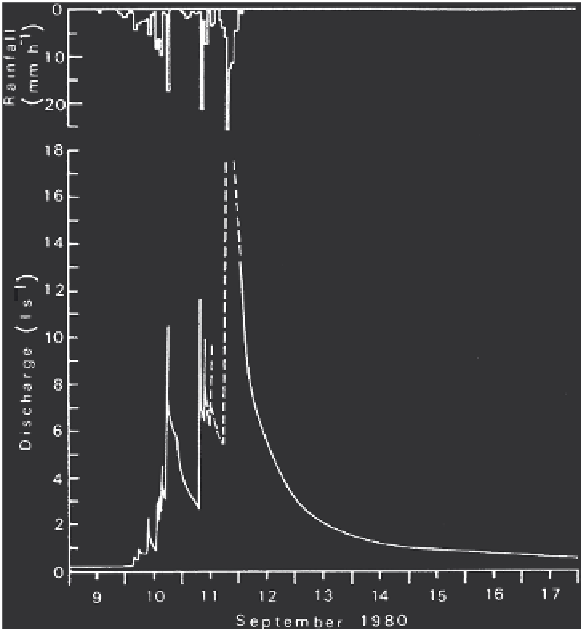Geoscience Reference
In-Depth Information
Fig. 11.8 The precipitation
and runoff
hydrograph of the
195 mm storm
event on the
catchment shown
in Figure 11.7.
(From Tanaka
et al.
, 1981.)
system; this consists of a macropore domain, which provides rapid subsurface flow that
is not in equilibrium with the soil matrix, and of a matrix domain, inwhich the trans-
port is very slow and inwhich evaporative processes cause major water losses and
increased salinity (see Figure 11.9). Va r iations in the ratio of old to new water in the
runoff were seen to depend mainly on the size of the precipitation event; macropores can
conduct the flow directly or they may also feed shallow perched saturated zones overly-
ing low permeability bedrock. Whenever the entire profile is fully saturated, as during
snowmelt episodes, the two domains are connected, and large subsurface flow rates are
produced.
In the above studies it was shown how subsurface flow through macropores and other
preferential flow paths can play a major role in storm runoff generation. However, the
specific interpretations of the measurements, especially on the relative roles of old and
new water inthis process, differed somewhat, and in some cases they were contradictory.
Although this is largely the result of the wide variety in catchments that were being
studied, it is no doubt also related to the differences in experimental techniques used
in these studies. This was brought out, for example, in the long-term observations,
carried out on the steep mixed evergreen forest catchments (1.63-8.26 ha) in a humid
climate (2600 mm y
−
1
)atMaimaiin New Zealand; a succession of detailed studies has

